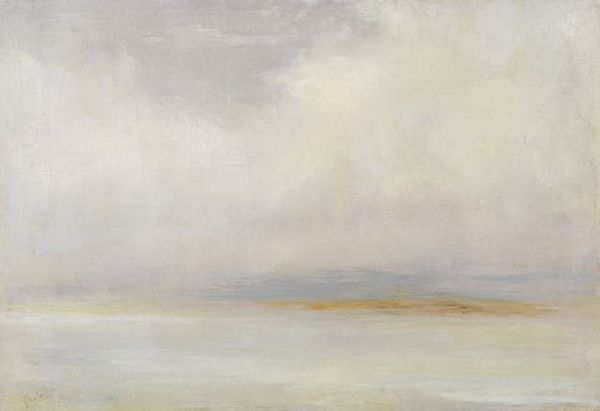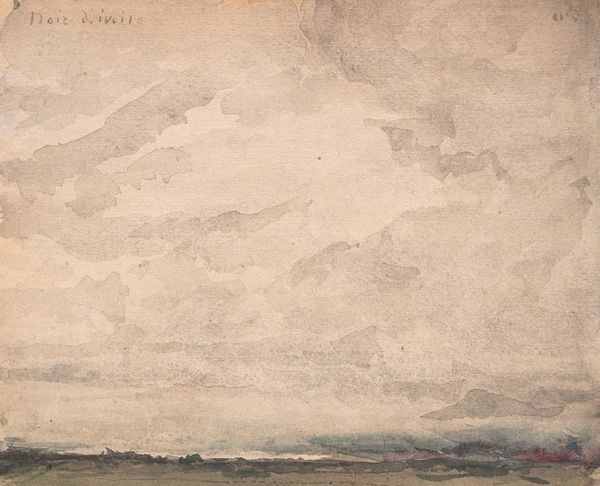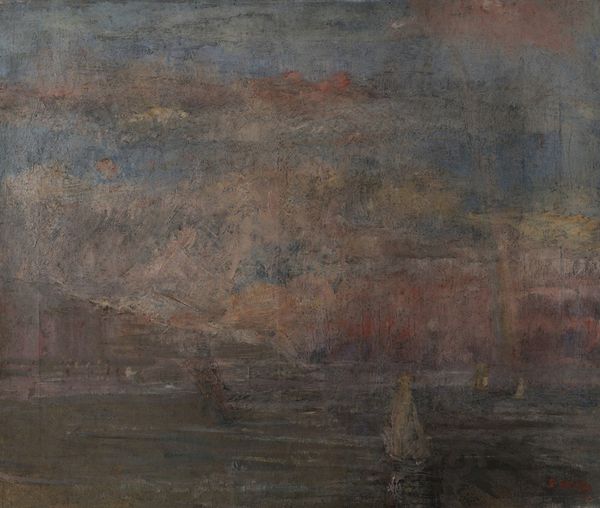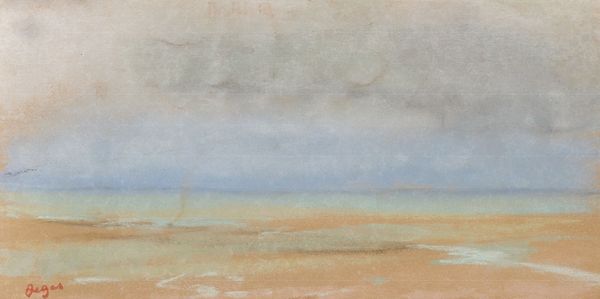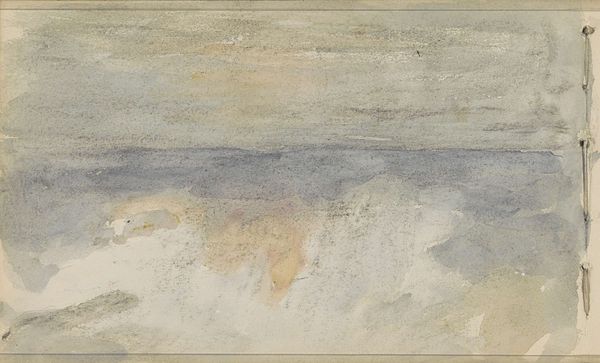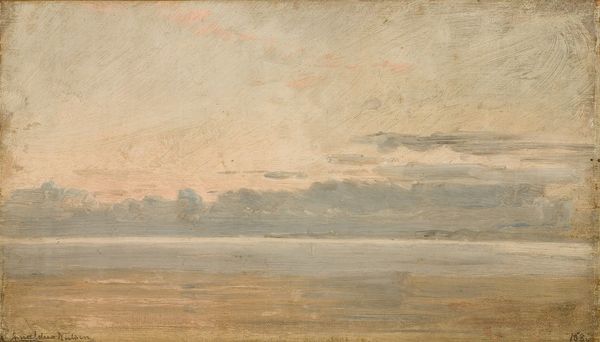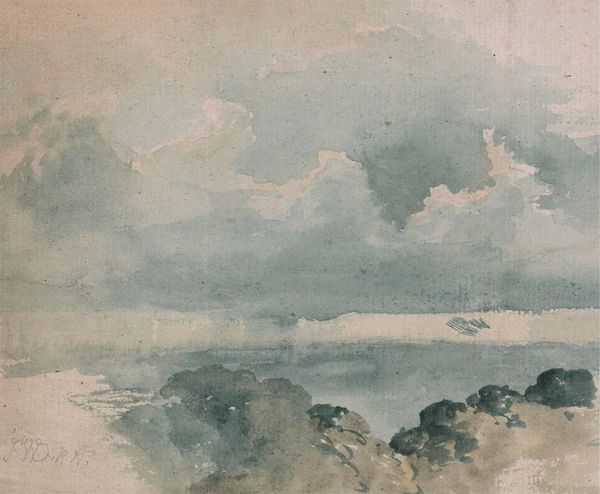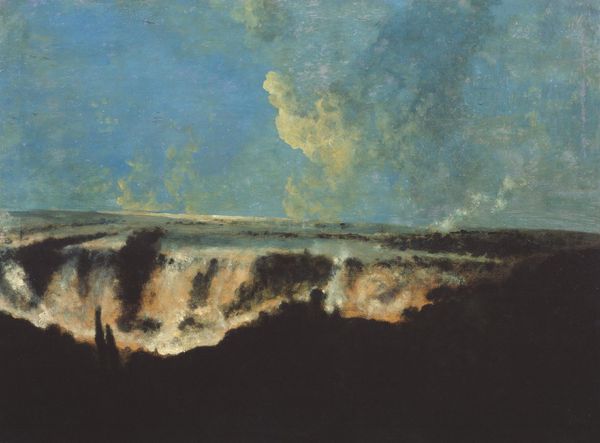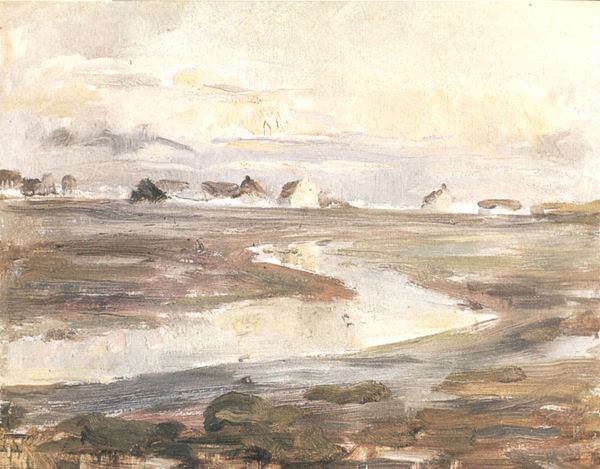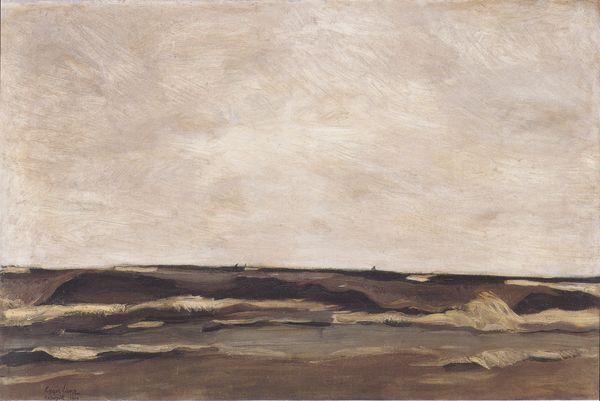
Dimensions: 45 x 45 cm
Copyright: Public domain
Richard Parkes Bonington’s “The Norman Coast,” likely made in the 1820s, is an oil painting built up through many thin layers of pigment. The canvas support is visible in many places, especially in the upper register, where rapid brushstrokes evoke a sky pregnant with possibility. Bonington was part of a generation of artists who were fascinated by immediacy. With newly available premixed paints, and the rise of plein air painting, artists gained unprecedented capacity to capture fleeting atmospheric effects. Consider how much labor is implied by this seemingly casual painting. There’s the work of the farmers and fishermen depicted, of course, but also the labor required to produce the canvas, stretchers, brushes, and paints. Bonington’s genius was to find beauty and significance in everyday scenes, elevating them to the level of fine art. His approach challenges any rigid separation between artistic creation and the wider world of labor and material production.
Comments
No comments
Be the first to comment and join the conversation on the ultimate creative platform.
